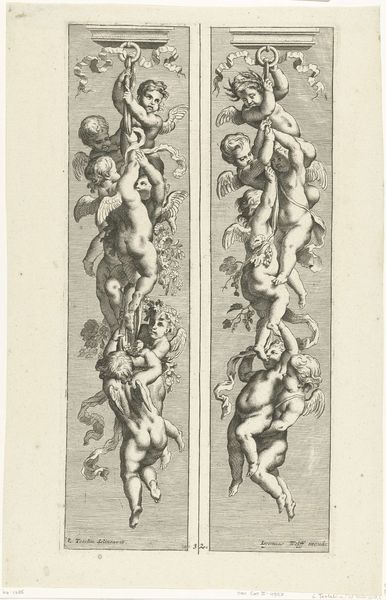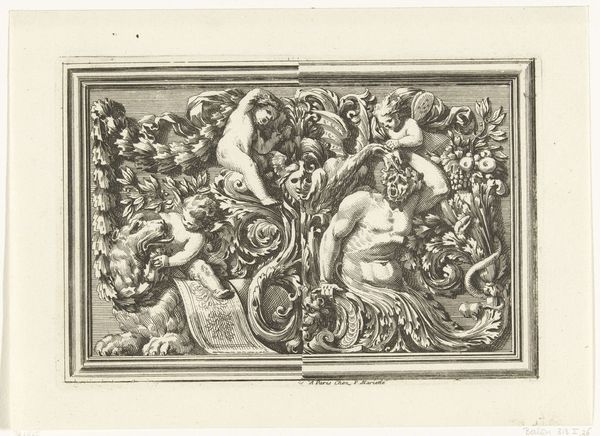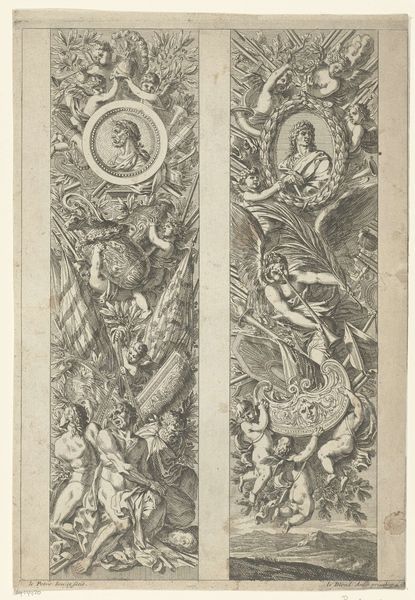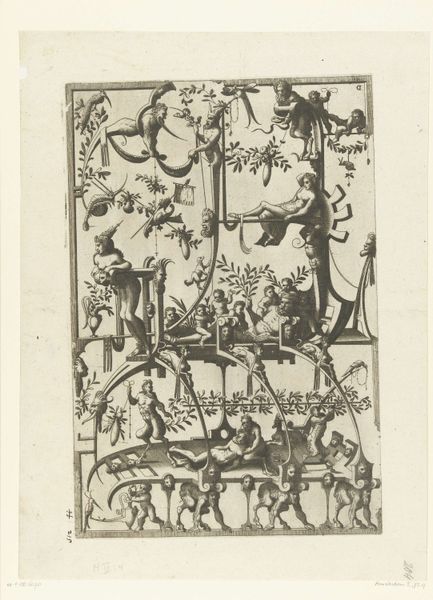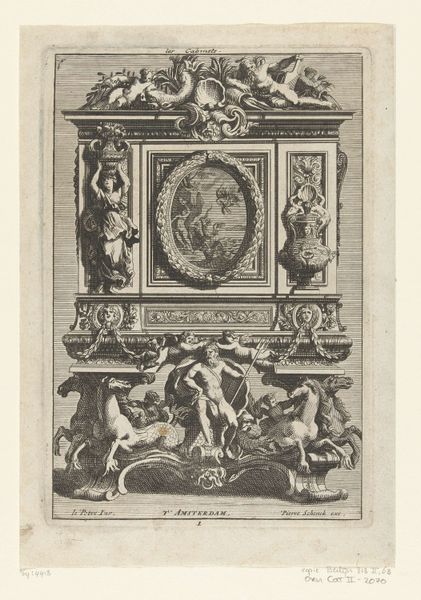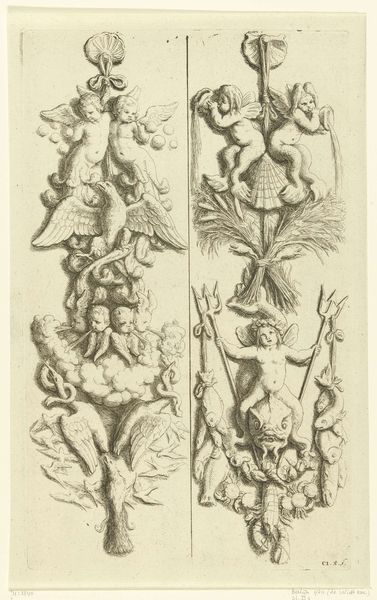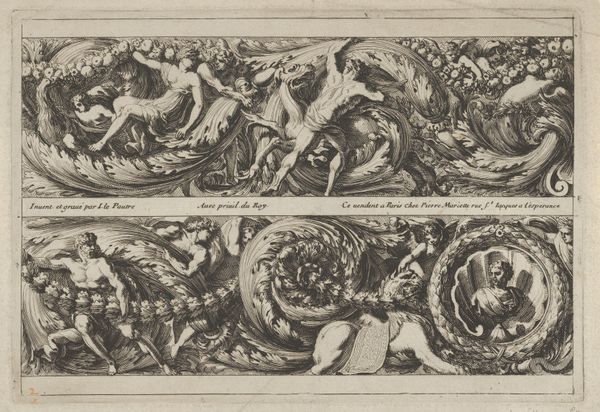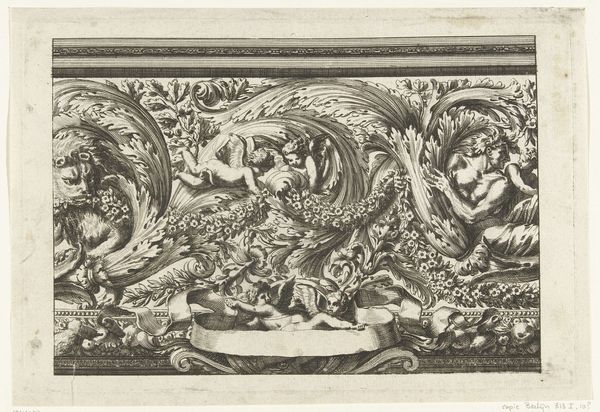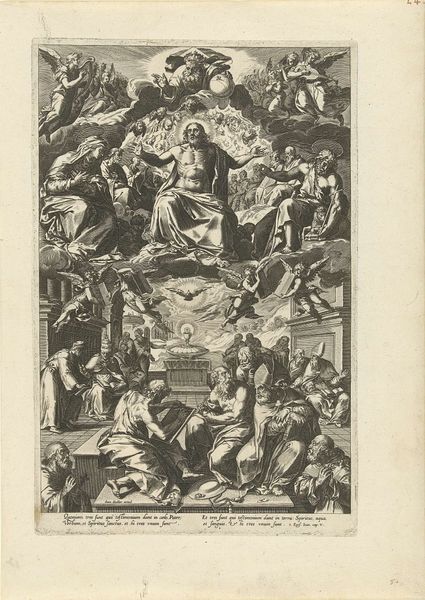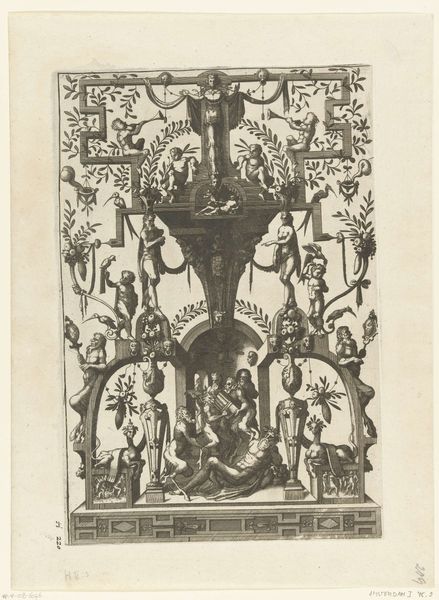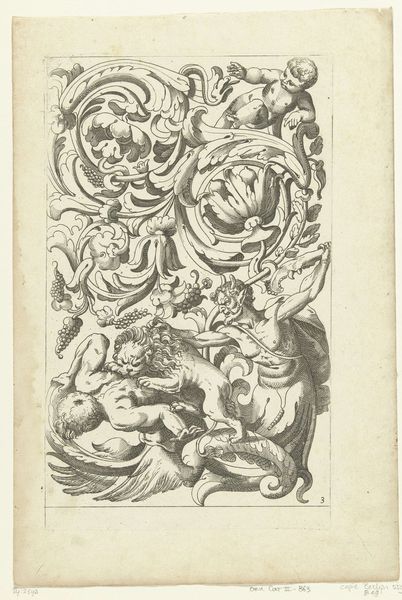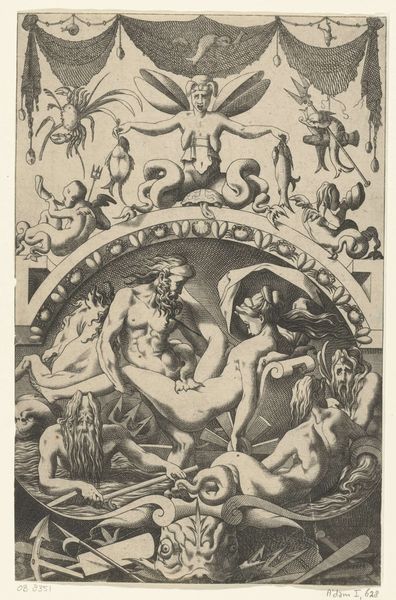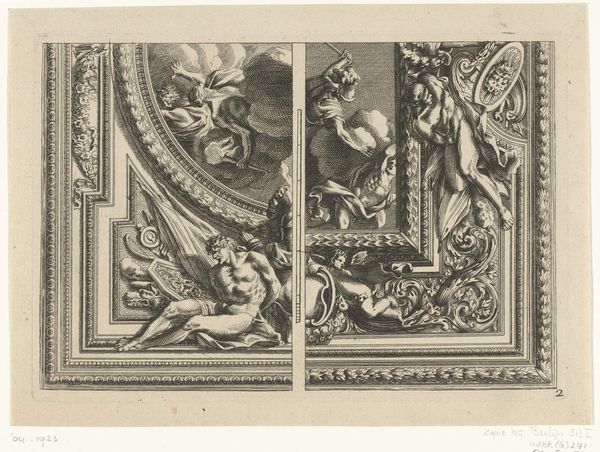
drawing, print, ink, engraving
#
drawing
#
allegory
#
baroque
# print
#
figuration
#
ink
#
genre-painting
#
engraving
Dimensions: height 371 mm, width 204 mm
Copyright: Rijks Museum: Open Domain
Curator: Here we have a print from before 1724, currently held in the Rijksmuseum, called "Twee trofeeën met putti." It is an engraving rendered in ink. What do you make of it? Editor: It feels quite whimsical and airy. The putti, or cherubic figures, create a sense of lightness, even though there’s a definite formality to the composition, contained in these very strict vertical frames. Curator: Indeed, these "trophies," or decorative panels, were immensely popular in the Baroque era. Prints like these served a distinct function within the visual culture. Editor: As architectural ornaments? This imagery feels overwhelmingly ornamental. I wonder how these cherubs were seen, particularly if we think about labor hierarchies and child exploitation. Were they just purely decorative, or did they evoke larger themes? Curator: Absolutely both. Allegory was a popular theme, and the putti symbolized love, divinity, or even artistic inspiration. The interesting thing is these kinds of prints provided pattern books or source material for artisans and craftspeople. Furniture makers, plasterers – could adapt these designs in myriad of ways. Editor: So it’s interesting, this piece is actually quite accessible, because these cherubic figures carry over centuries of art, we still know them and see them in advertising. The ribbons and swags they're holding aloft are clearly of that earlier Baroque style, a perfect reflection of the era’s embrace of opulence. But that sweetness sits a little uncomfortably with our contemporary sensibilities about children. Curator: That contrast gets to the core of considering visual culture as it evolves through different sociopolitical lenses, and how meanings are very unstable. It forces us to engage with art as something actively negotiated, and it keeps the conversation fresh and insightful. Editor: Exactly. Analyzing the shifting reception of the work helps us understand not just the past, but how we interpret the present. This really emphasizes the vital need to examine art through an intersectional, social and historical lens.
Comments
No comments
Be the first to comment and join the conversation on the ultimate creative platform.
